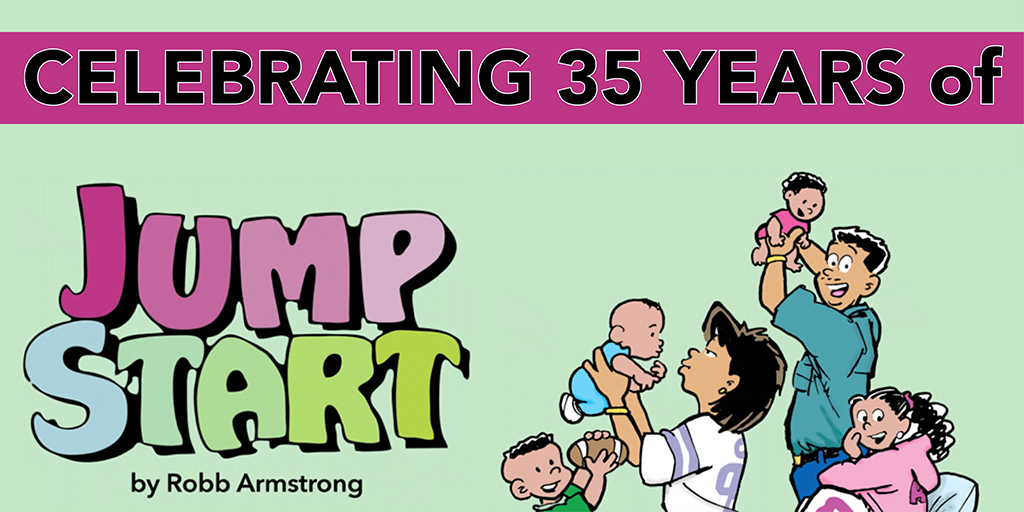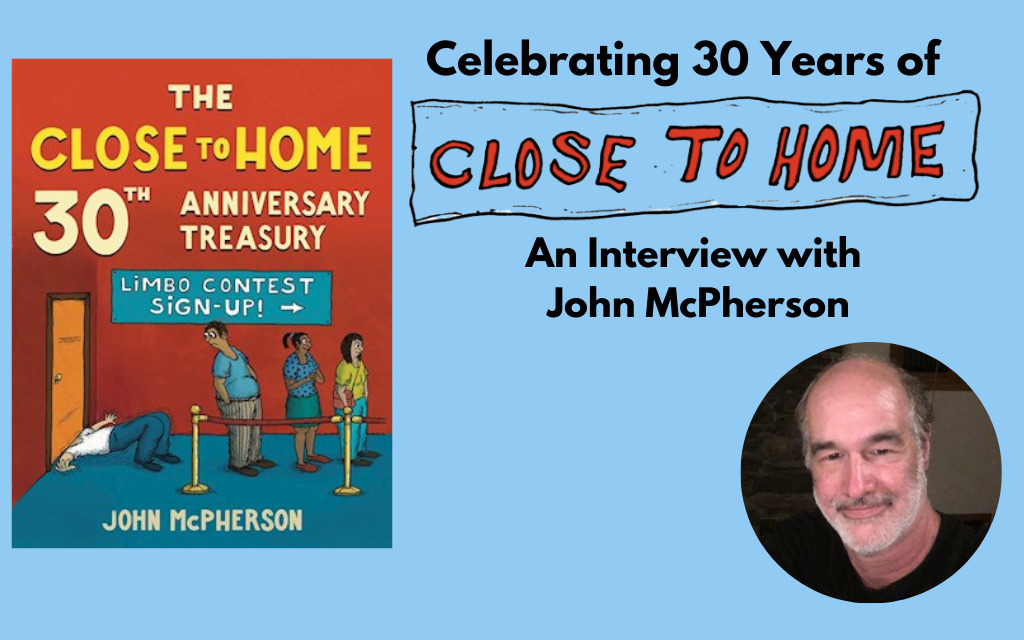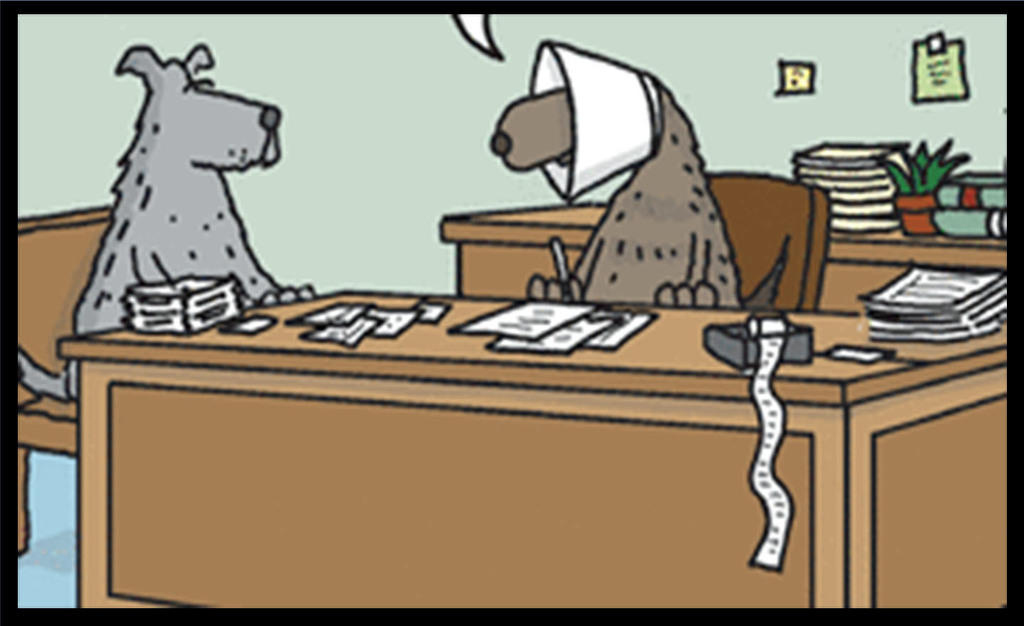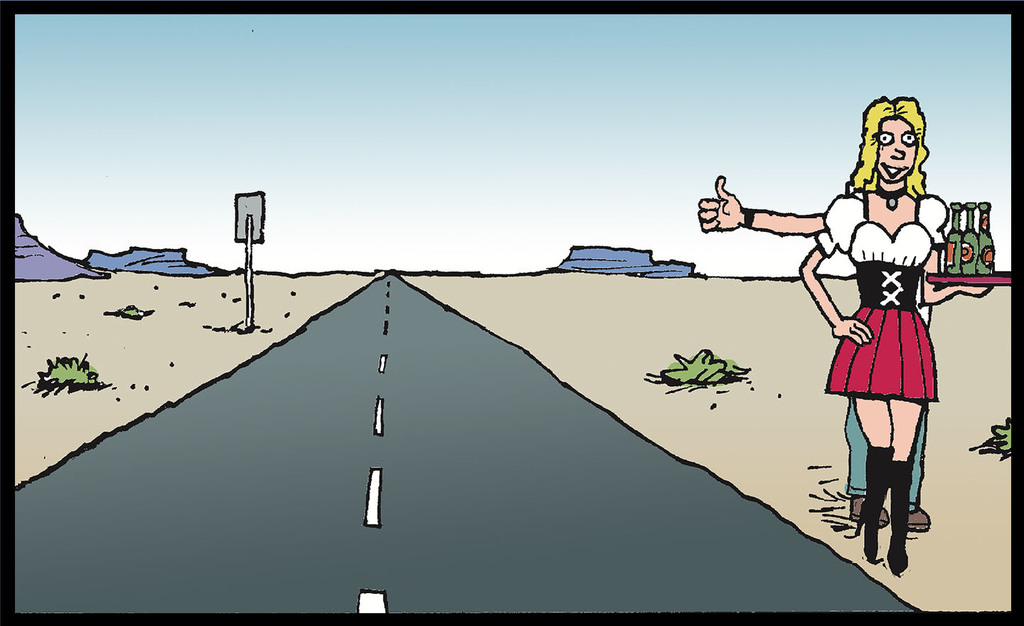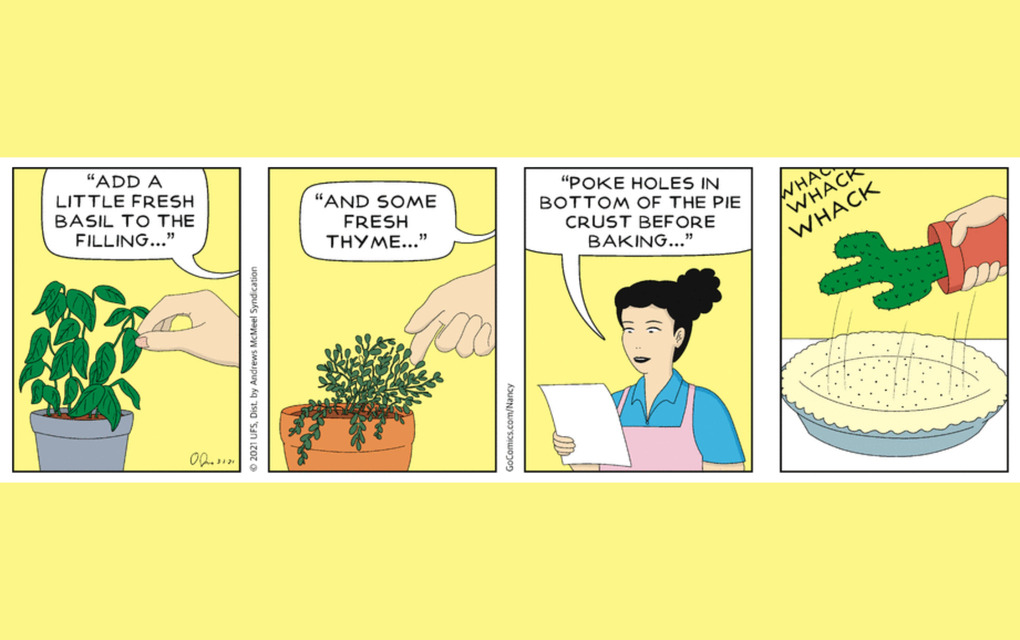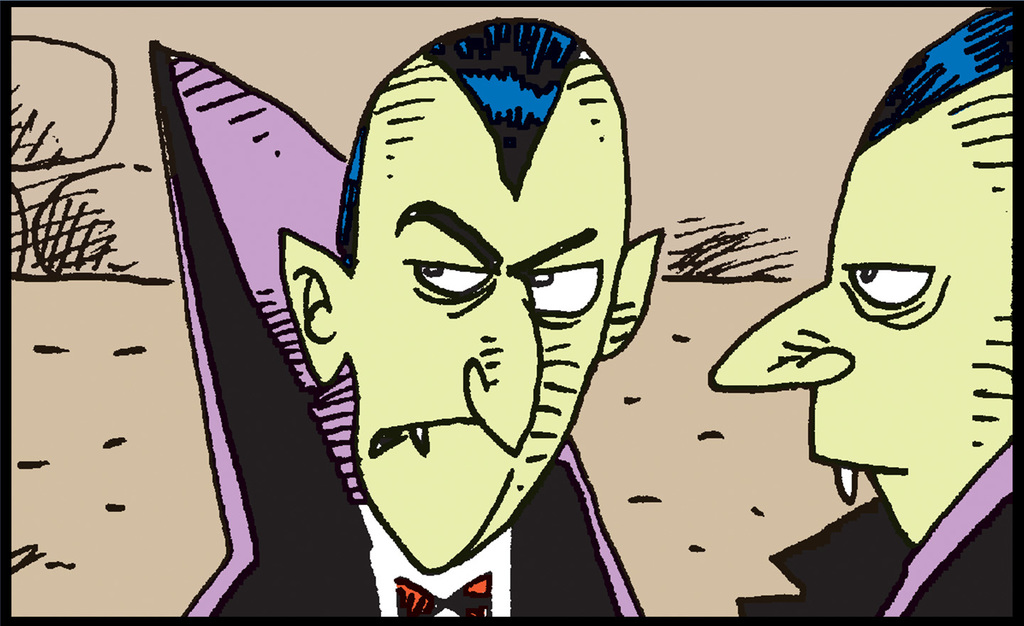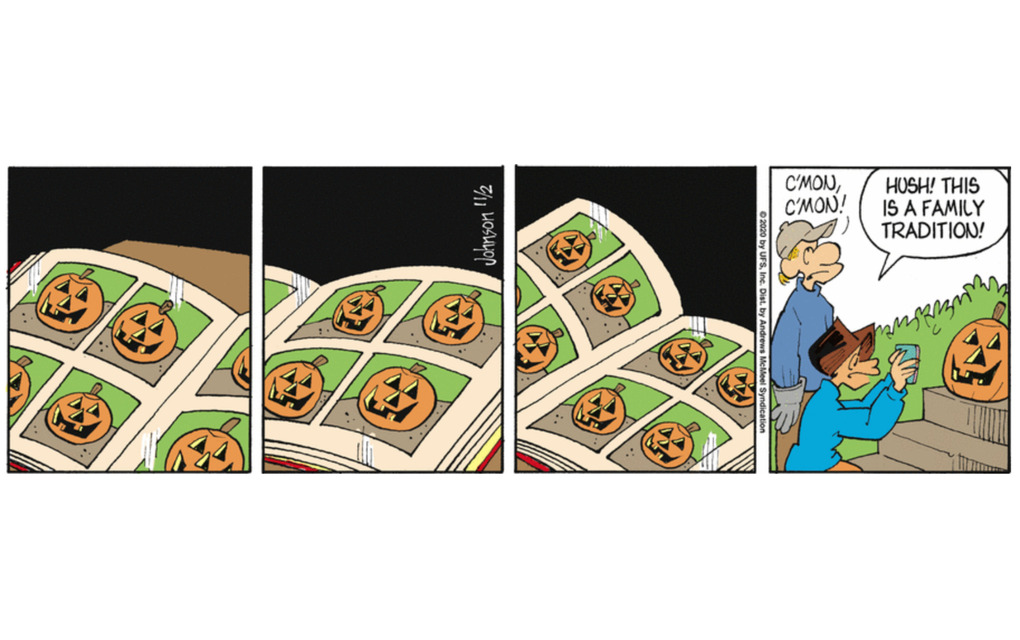Meet The Great Amanda Behind 'Amanda The Great'
by The GoComics TeamThis week marked the official launch of Amanda the Great on GoComics.com, bringing with it four years of strips chornicling artist Amanda El-Dweek's adventures in life, art, marriage and more in North Dakota. Though El-Dweek humbly jokes about the title of her strip, after getting to catch up with the latest GC creator over e-mail, we can assure you that Amanda is, indeed, great. Unlike Alexander, the expression of her greatness doesn't stem from conquering your homeland -- only your heart.
Read our full interview with El-Dweek below:
GoComics: Your series is something of a fictionalized bio comic, incorporating magical realism and other devices to give readers a look inside your head. How did you decide on this approach and how do you feel it's changed over the course of your series?
Amanda El-Dweek: I never really had a plan for Amanda the Great until the last couple of years - but I actually had the monster ("Angermemnon") around since college. I used to draw the monster in my sketchbooks in order to give a face to my anger. Back then it was college angst and anger, but it kind of evolved into regular life anger because life is largely unfair and our minds want to remedy unfairness, and sometimes they cannot, and I guess that is kind of how I deal with it. It seems less awful than throwing a tantrum...maybe? Haha!
I think both Young Amanda and Angermemnon have evolved since I first introduced them. Sometimes I draw Angermemnon as timid and thoughtful - anger is none of these things, but I kind of like that the character is that way. I feel like they both can have more than one attribute, but they both serve as vehicles for me to figure myself out, and hopefully have some comedic value as well. I like to poke fun of myself, and they sometimes serve to aid that purpose as well.
CG: Comics is a big medium. How did you decide that drawing serial comic strips was right for you?
AE-D:I started out young (maybe 6 years old?) drawing comic strips. Someone had bought me a Garfield comic book one Christmas, and I think that was my first true love - the comic strip. I read a ton of Archie comics, too, which were a few pages of story, but I always preferred the succinctness and snappy humor of the comic strip. I really admire cartoonists that can do one-panel comics, as it is really challenging to convey a story in one panel. I like to tell a story. And character development - I really enjoy how different people's personalities are, and how that can play out in a three or four-panel strip.

GC: The Dakotas aren't represented in many comics. Do you consider yourself something of an ambassador for your neck of the woods?
AE-D: Absolutely - I love this place!
I was born and raised in the northeastern-most corner of North Dakota, and we now live in western North Dakota. My husband, Dan, is from Minnesota, and has lived and worked in the tri-state area (MN, ND, and SD), so he has more Midwest street credentials than I do.
North Dakota is a beautiful state - the western side is more rugged (Theodore Roosevelt National Park is gorgeous), and the eastern side is a lush river valley, which is great for agriculture. I'm proud to be from here, and to live here (for as long as life allows, of course, as things can change). My family is from here, and it's a good place to be from.
GC: Drawing material from your own life means constantly evaluating how much or how little you feel comfortable revealing to the reader. How conscious of this are you as you work? And have you ever pulled or reconfigured a strip idea that you thought showed too much or too little?
AE-D: Oh yeah - I've done strips up and then ended up pulling them because they were just too personal. I'm VERY conscious of it - I have to be especially respectful to Dan, as he is in my life full-time, but maybe doesn't want everyone knowing his business. I probably am more aware of it for his sake rather than my own, because he is a real person who has a professional career, and I don't want to affect that too much. I am willing to maybe put more out there about myself because I can control how much I let out. I don't put a ton of my family stuff in it - just some light stuff now and then. My grandpa is good for a one-liner fairly often, so I feature him, and I'm close to my parents so they are not exempt from the comic strip.
I have about three strips dealing with the loss of Dan's uncle, and I had drawn some stuff up that I later vetoed. I felt that the fact that it happened ought to be mentioned in the comic strip, as that is what happened in real life, but I wanted to handle it respectfully. It's a little tricky with real life stuff - I want to keep it real, but not everything has to make it into the strip.
GC: You take the time to interact with your readers online and on social media. How important is that exchange to you as a person and how, if at all, does it shape how you approach your work?
AE-D: It is manageable to maintain contact with people who comment on my comic, and on social media. I really enjoy it, because whether they are other cartoonists or strictly just readers, they are taking the time to read something I made. I don't want to take that for granted. And it's all been friendly so far! I enjoy it when other cartoonists take the time to talk to me when I comment on their work, so I like to be able to reciprocate. And I understand that some cannot do that, as they receive a lot of feedback!
I am not sure if it shapes my work or not - I do what I do, and it's not a controversial strip (that I'm aware of), so I don't hem and haw too much about how it will be received by the masses.
GC: A recurring theme in your work is song lyrics, particularly when you show yourself singing in your car. Are you referencing your day-to-day life, or do you try to use songs that best fit the narrative of a given strip?
AE-D: It's mostly just mimicking what I do in real life. I sometimes will just start singing something - sometimes it's triggered by what's happening, and sometimes it's just a song that is in my head. I sing a lot in the car, which I show in my strip - I can't help myself. I've always listened to music while drawing, so it makes sense to combine the two.

GC: Another recurring theme is you having conversations with your younger self. Have you found these a helpful form of self-examination? Would you recommend it to others?
AE-D: The Young Amanda character kind of helps me give a voice to the nagging old messages that I have in my head from the past. A lot of how I think can sometimes be traced back to how I was as a child, working out some things that maybe I still carry around with me. I have a specific strip that shows me carrying around figurative old baggage as actual baggage, explaining to Young Amanda that I really don't know why I'm doing that, since it's heavy and not at all helpful. Being an adult can be paradoxical, in my experience.
I find that it is helpful with self-examination. I have found that I can kind of get an answer from drawing things out. Sounds strange, I know. But it works. I recommend it, and you don't even have to draw if you don't want to - just write it out, or talk it out. You'll figure it out, I know it.
GC: You work in traditional media, using markers and washes and more to fill your line art. Who are some creators who have influenced your style and creation methods?
AE-D: My style seems old school compared to a lot of the comics out there - I use ink and ink wash, a brush, and a Kuretake pen in which to letter. (I draw it first in pencil, though, because I'm not a wizard.) I like the ink wash look that the fancy magazine comics have - though, I know I do not duplicate it like they do! I just like it to look hand-drawn, and not too sleek. As a kid, I pored over Bill Watterson's comics and drawings and I loved his brush-like style, but I also really loved how tight and precise Bill Amend did FoxTrot. Later on in life, I loved Richard Thompson's scratchy-beautiful line work. I don't want to duplicate those, but I sure admire (envy?) them.

GC: Working on comics or other creative work when you also have a day job requires a certain amount of discipline. What motivates you and keeps you creating as you balance everything else in your life?
AE-D: I don't currently have a day job - other than drawing comics, which is a day and night job sometimes - but when I did, it was difficult. My comic strip starts with me back in late 2012, working in healthcare, which is why you see me in office settings and so forth. I worked until a little over a year ago in real life, only stopping because Dan's work took us in a different direction. That suited me fine - and I am grateful for the opportunity to be able to concentrate just on my comics. It worked - here I am!
Having to think about stuff that wasn't funny all day, and then come home and try and draw and think of funny stuff was a challenging switch. Of course, when I did work a "real" job (haha), I did daydream a fair amount, because I couldn't be serious 100% of the time.
I had a few years where I didn't really draw much, because I worked nights, and I slept a lot of the day. When I worked days, I was too tired to draw. Shame, right? But a couple of years ago, I really seriously committed to drawing comics almost every day (thanks to Dan, who is very encouraging and supportive), and I was still working full-time. I was focused, and once I made myself do it for a while, it became second nature to come home and draw.
Dan told me to mention that I balance drawing comics and keeping the house, and I laughed because our house is, um... well, it looks like we actually live here and not so much like a museum. But if my mom and dad ask, it's super clean and organized.


